
| Southern Armyworm (one synonym : Persectania evingi Hampson, 1905) HADENINAE, NOCTUIDAE, NOCTUOIDEA | (donherbisonevans@yahoo.com) and Stella Crossley |
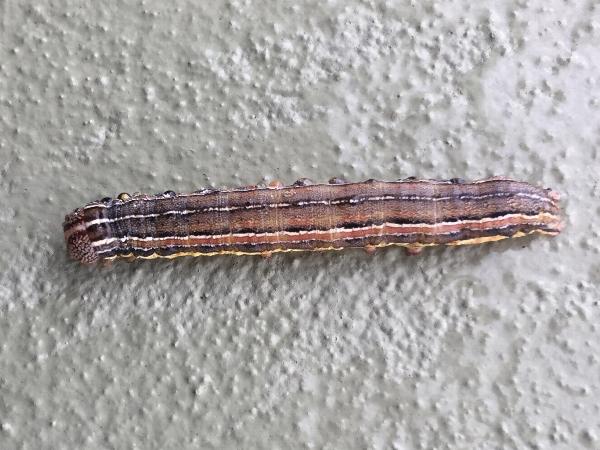
(Photo: courtesy of Les Gregory, near Wollongong, New South Wales)

| Southern Armyworm (one synonym : Persectania evingi Hampson, 1905) HADENINAE, NOCTUIDAE, NOCTUOIDEA | (donherbisonevans@yahoo.com) and Stella Crossley |

(Photo: courtesy of Les Gregory, near Wollongong, New South Wales)
This Caterpillar can vary in colour from buff, brown, or greeny brown, to dark grey, and has a dark stripe down the back split by a narrow paler stripe, and a lighter stripe along each side. It is very similar to the caterpillar of Mythimna convecta, although the adults are quite different.
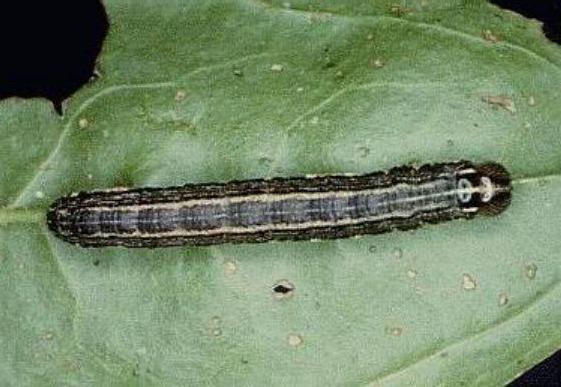
The caterpillar is an agricultural pest, causing damage to pastures and crops, such as
It causes special damage by chewing through the stems, severing the seedheads.
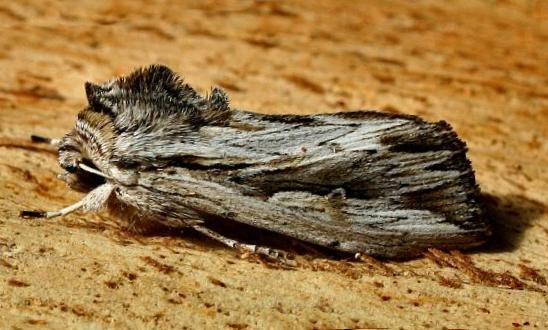
In February 2017 near Wollongong, New South Wales, the caterpillars were very abundant in the local pastures. and were present in such numbers that they invaded houses and covered the local bitumen road making quite a mess as vehicles ran over them.
In August 1980 near Narrandera also in New South Wales, the caterpillars were very abundant in the local pastures. Four weeks later the adults were present in such numbers that they invaded houses, causing some inhabitants to evacuate, and leaving the walls coated with wing scales. They even invaded Melbourne at the same time along with Bogong Moths. The two species entered homes and cars and were a nuisance generally.
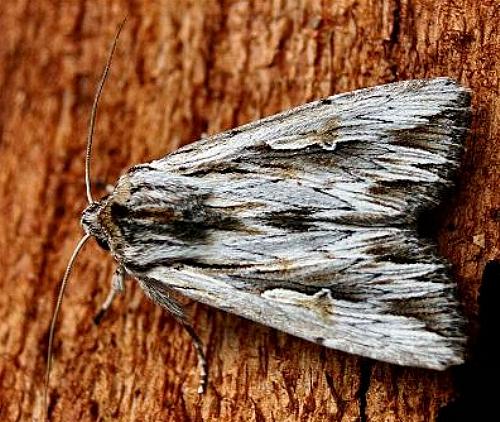
The adult moth has fawn forewings, each with a pattern of pale and dark angular patches, including, near the centre, a pale ellipse joined to a reniform mark. The hindwings are buff, darkening to the margin, with dark veins. The moths have a wingspan of about 4 cms.
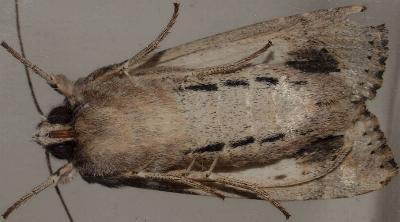
The underside shows a large black spot under the wingtip of each hindwing. The females, but not the males, have a row of black dashes each side under the abdomen.
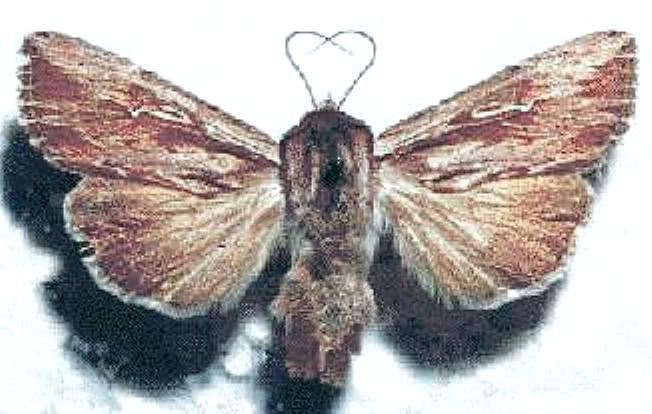
The species occurs mostly in the south and east of Australia in
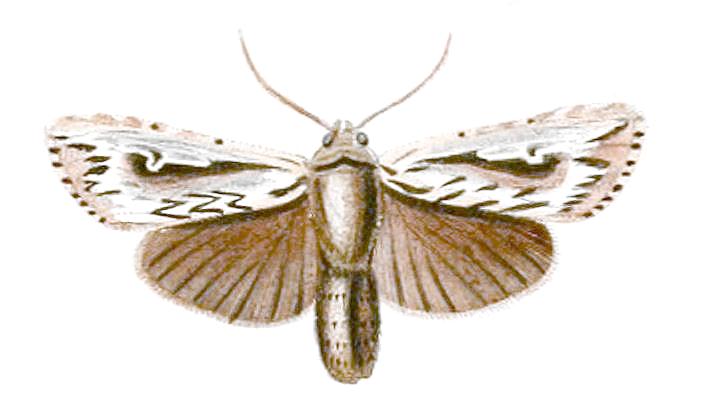
Further reading :
Ian F.B. Common,
Moths of Australia,
Melbourne University Press, 1990,
figs. 50.1, pp. 43-44, 65, 466.
Pat and Mike Coupar,
Flying Colours,
New South Wales University Press, Sydney 1992, p. 73.
K.F. Helm,
Migration of the armyworm Persectania ewingii
moths in spring and the origin of outbreaks
Australian Journal of Entomology,
Volume 14, Issue 3 (September 1975), pp. 229–236.
Peter B. McQuillan, Jan A. Forrest, David Keane, & Roger Grund,
Caterpillars, moths, and their plants of Southern Australia,
Butterfly Conservation South Australia Inc., Adelaide (2019), p. 165.
Peter Marriott & Marilyn Hewish,
Moths of Victoria - Part 9,
Cutworms and Allies - NOCTUOIDEA (C),
Entomological Society of Victoria, 2020, pp. 24-27.
John O. Westwood,
footnote to T.J. Ewing:
Observations upon the natural history of two species of Lepidopterous insects of Van Dieman's Land,
Journal of Proceedings of the Entomological Society of London,
Volume 2 (1839), pp. liv-lvi, and also
Transactions of the Entomological Society of London,
Volume 2 (1839), Plate 20, fig. 1.
Paul Zborowski and Ted Edwards,
A Guide to Australian Moths,
CSIRO Publishing, 2007, p. 198.
 caterpillar |  butterflies |  Lepidoptera |  moths |  caterpillar |
(updated 14 April 2013, 12 May 2025)